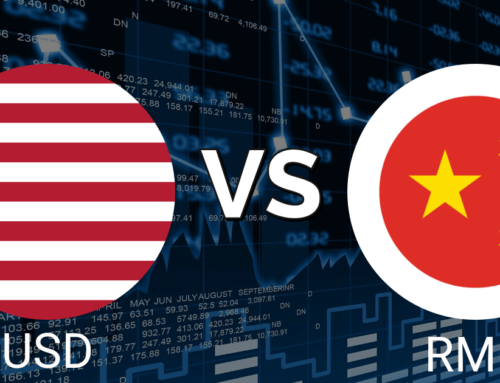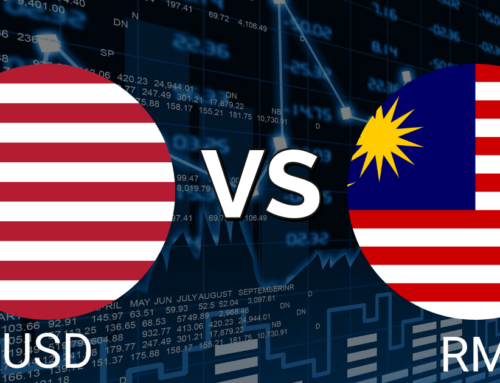
The history of USD and SGD is a history of international trade and economic relations between the US and Singapore. It begins at the age of discovery in the 15th century, when European explorers came to Asia looking for spices, silk, gold, and other riches. It continues through the colonial era and World War 2. It concludes in the present day with Singapore’s status as an international finance center and port city.
About SGD
The Singapore dollar is abbreviated with S$ and is the official currency of Singapore, which was founded in 1819 by Sir Thomas Stamford Raffles. The Singapore dollar is made up of 100 cents and is often shown as S$. It’s also known as the “Sing.”
The Singapore dollar was created in 1965, following the dissolution of the monetary union between Malaysia and Brunei. Singapore’s currency had long been known as the Straits dollar, Malayan dollar, and British Borneo dollar. The SGD was valued at par with the Malaysian ringgit until 1973, when it was devalued to half its value in Singapore dollars.
History of SGD
During different time periods in Singapore’s history, a variety of currencies were used.
Precolonial Period
In the 14th century, Singapore was a bustling commercial centre, as evidenced by archaeological discoveries. Several Chinese coins have been discovered at various excavation sites, the majority of which are from the Northern Song Dynasty (960–1126/1127). According to these findings, archaeologists think that Chinese money was used as a means of exchange during that period.
British Period
The earliest years following the establishment of a British trading post in Singapore in 1819 saw a variety of currencies being used. The Indian and Javanese rupee, Dutch guilder, and Spanish silver dollar were among them, with the last serving as the main unit of account. The Portuguese and Spanish introduced silver dollars to Southeast Asia in the 16th century, and they were valued by their silver content. In 1823, Resident of Singapore John Crawfurd declared the Spanish dollar the official currency of Singapore in order to reduce the confusion caused by a variety of currencies in circulation.
Singapore joined the Straits Settlements in 1826, when it became part of the East India Company’s territories, which sought to make the Indian rupee and its subsidiary coins the official currency in the settlements via three Currency Acts passed between 1835 and 1855. Despite such efforts, the majority of transactions in Singapore were still conducted using the Mexican dollar, which had been established to replace the Spanish dollar. This caused the public funds to be recorded in one currency (rupees), even though actual transactions took place in another (Mexican silver dollars). The colonial governor of Hong Kong, Hercules Robinson, stated that the situation was “unhealthy” and would result in “additional work and confusion.”
In 1867, governance of the Straits Settlements was transferred from India to the Colonial Office in London. The Straits Settlements Legislative Council made history by passing the Legal Tender Act of 1867, which abolished Indian rupee’s legal tender status. The Mexican, Hong Kong, Spanish, Peruvian, and Bolivian silver dollars were permitted as legal currency in the Straits Settlements instead. The Japanese yen and American trade dollar were also recognized as lawful tender currencies in 1874.
Japanese Period
The Japanese invasion in 1942 led to the creation of the military yen. Because the $10 bill featured a banana plant, people nicknamed the currency “banana money.” The old British money was still legal currency, but it was quickly replaced by the new Japanese money on the open market.
The first problem with “banana money” was serially numbered with control letters and safety features like a watermark and security thread. Following this, millions of dollars in cash were produced without security features, taking the serial numbers off the notes. The military notes were printed with a view to being used in parallel with the Straits and Malayan dollar currency, but their value plummeted over time. By 12 August 1945, the rate was 950 Japanese military dollars for each Strait dollar. The Japanese yen was worthless when it was demonetised by the British after they regained control of Malaya in September 1945.
Independent Singapore
Singapore formed the Board of Commissioners of Currency, Singapore (BCCS) as the sole currency-issuing authority in Singapore on 12 June 1967. The board was established with six members and chaired by Lim Kim San, then Minister for Finance. The British pound was replaced by the US dollar as the main intervention currency in 1970, with the Singapore government following suit. The sterling was abandoned in favor of the US dollar as a result of Britain’s economic devaluation. In 1973, Singapore implemented a managed floating exchange rate, with the Singapore dollar linked to a basket of its primary trading partners’ currencies.
In 1971, Singapore’s financial banking sector had a reform with the establishment of the Monetary Authority of Singapore (MAS), which centralized central bank activities that were previously dispersed among various government agencies. On 1 October 2002, BCCS merged with MAS, giving it note-issuing powers and making it a full-fledged central bank.
USD News
- How Much Is the Squid Game Prize Money in USD? The Season 2 Twist Makes It Even More Shocking - STYLECASTERon December 26, 2024 at 7:05 pm
How Much Is the Squid Game Prize Money in USD? The Season 2 Twist Makes It Even More Shocking STYLECASTER
- OYO acquires Motel 6 and Studio 6 for USD 525 million to expand North American footprint - Prop News Timeon December 26, 2024 at 6:34 pm
OYO acquires Motel 6 and Studio 6 for USD 525 million to expand North American footprint Prop News Time
- 2025 AUD/USD Technical Outlook Preview - Forex Factoryon December 26, 2024 at 5:50 pm
2025 AUD/USD Technical Outlook Preview Forex Factory
- Cycle Tourism Market Set to Reach USD 241.27 Billion by 2030, Driven by Growing Demand for Eco-Friendly and Adventure Travel in North America, Europe, and Asia: New Travel Updates You Need to Know - Travel And Tour Worldon December 26, 2024 at 5:39 pm
Cycle Tourism Market Set to Reach USD 241.27 Billion by 2030, Driven by Growing Demand for Eco-Friendly and Adventure Travel in North America, Europe, and Asia: New Travel Updates You Need to Know Travel And Tour World
- Global Business Travel Market to Grow at a CAGR of 9.5%, Reaching USD 2.1 Trillion by 2031, Fuelled by Corporate Travel and Leisure Integration : Here’s new facts you need to know - Travel And Tour Worldon December 26, 2024 at 5:20 pm
Global Business Travel Market to Grow at a CAGR of 9.5%, Reaching USD 2.1 Trillion by 2031, Fuelled by Corporate Travel and Leisure Integration : Here’s new facts you need to know Travel And Tour World
SGD News
- Webuy's AI Travel Assistant Drives SGD 465K Disney Cruise Bookings in Record-Breaking Campaign - StockTitanon December 24, 2024 at 12:00 pm
Webuy's AI Travel Assistant Drives SGD 465K Disney Cruise Bookings in Record-Breaking Campaign StockTitan
- KOREA to SGD: Convert South Korea Coin to Singapore Dollar - coinbase.comon December 20, 2024 at 9:22 pm
KOREA to SGD: Convert South Korea Coin to Singapore Dollar coinbase.com
- USD/SGD: Pullback should find support – OCBC - FXStreeton December 20, 2024 at 10:22 am
USD/SGD: Pullback should find support – OCBC FXStreet
- USD/SGD: Triple-top busted – OCBC - FXStreeton December 19, 2024 at 9:50 am
USD/SGD: Triple-top busted – OCBC FXStreet
- Safe and Green Development (SGD) Secures $10M Investment, Expands to 250-Home Portfolio in Strategic Growth Push - StockTitanon December 18, 2024 at 2:00 pm
Safe and Green Development (SGD) Secures $10M Investment, Expands to 250-Home Portfolio in Strategic Growth Push StockTitan


